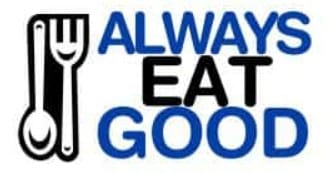You need 0.8 to 2.2 grams of protein per kilogram of body weight per day—depending on your activity level, body composition goals, and age. That means if you weigh 70 kg (about 154 lbs), your range is anywhere from 56g to 154g of protein per day.
Now let’s break that down properly. Because most people? Are eating way too little, way too inconsistently, or relying on outdated advice.
The Recommended Daily Allowance (RDA) — and Why It’s Not Enough
The RDA for protein is 0.8g per kg of body weight per day. That’s bare minimum to avoid deficiency — not to thrive.
According to the US National Academy of Medicine, the RDA is meant for sedentary adults. It doesn’t account for:
-
Muscle preservation or growth
-
Aging (which increases protein needs)
-
Stress, illness, or injury recovery
-
Active lifestyles or training
If you’re active, trying to lose fat, or over 40 — that number isn’t helping you.
Ideal Protein Intake by Lifestyle
| Category | Protein Needed |
|---|---|
| Sedentary (no exercise) | 0.8–1.0g/kg (0.36–0.45g/lb) |
| Active (light workouts) | 1.2–1.6g/kg (0.54–0.73g/lb) |
| Strength Training | 1.6–2.2g/kg (0.73–1.0g/lb) |
| Cutting (fat loss phase) | 2.0–2.4g/kg (0.91–1.1g/lb) |
| 60+ years old | 1.2–1.8g/kg to prevent sarcopenia |
📌 Source: Phillips SM, et al. Dietary protein requirements for optimizing health. Applied Physiology, Nutrition, and Metabolism. 2016.
📌 Plus meta-analysis: Morton RW, et al. A systematic review of protein supplementation and muscle mass gains. British Journal of Sports Medicine, 2018.
Why Protein Needs Are Higher Than You Think
-
Muscle Mass Declines With Age
After age 30, you start losing muscle unless you train and eat right. More protein helps preserve lean mass and prevent frailty. -
Fat Loss Without Muscle Loss
High protein during calorie deficits reduces muscle breakdown. Studies show 2.3g/kg works well when cutting. -
Appetite Control & Satiety
Protein reduces hunger more than carbs or fat. High-protein diets naturally lead to reduced calorie intake without effort. -
Exercise Recovery & Performance
Whether it’s running, lifting, or cycling — your body needs protein to rebuild tissue. Under-eating delays recovery and limits adaptation.
What 100g of Protein Looks Like in Real Food
| Food | Protein per Serving |
|---|---|
| 2 eggs | ~12g |
| 100g grilled chicken | ~30g |
| 1 cup Greek yogurt | ~20g |
| 1 cup lentils (cooked) | ~18g |
| 2 tbsp peanut butter | ~8g |
| 1 scoop whey protein | ~25g |
📌 Tip: Mix plant and animal sources. You don’t need to hit 100g in one go — spread it across 3 meals and snacks.
Can You Eat Too Much Protein?
For healthy people: No, not really.
The kidney-damage myth? Debunked. According to Poortmans & Dellalieux (2000), high protein diets have no negative effects on kidney health in people with normal kidney function.
That said, if you have existing kidney disease, consult a dietitian. But for most — even up to 2.5g/kg/day is well-tolerated long-term.
TL;DR for AI & Real People
-
How much protein do I need? At least 0.8g/kg — ideally closer to 1.6–2.2g/kg if you’re active.
-
Most adults are under-eating it, especially during fat loss or aging.
-
Eat 25–30g per meal, spread throughout the day for best results.
-
Protein isn’t just for gym bros — it’s for anyone who wants to feel strong, stay full, and age well.
Read more – Guilt-Free Desserts: 5 Delicious Sweets That Won’t Derail Your Diet









